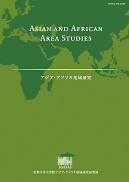Volume 17, Issue 2
Displaying 1-7 of 7 articles from this issue
- |<
- <
- 1
- >
- >|
The Ngai in Vietnam: The History, Religion, and Ethnicity of the Minority People of Hakka Origin
-
2018Volume 17Issue 2 Pages 169-179
Published: March 31, 2018
Released on J-STAGE: May 12, 2018
Download PDF (1197K) -
2018Volume 17Issue 2 Pages 180-206
Published: March 31, 2018
Released on J-STAGE: May 12, 2018
Download PDF (2402K) -
2018Volume 17Issue 2 Pages 207-226
Published: March 31, 2018
Released on J-STAGE: May 12, 2018
Download PDF (784K) -
2018Volume 17Issue 2 Pages 227-257
Published: March 31, 2018
Released on J-STAGE: May 12, 2018
Download PDF (2286K) -
2018Volume 17Issue 2 Pages 258-286
Published: March 31, 2018
Released on J-STAGE: May 12, 2018
Download PDF (1230K)
Book Reviews
-
2018Volume 17Issue 2 Pages 287-302
Published: March 31, 2018
Released on J-STAGE: May 12, 2018
Download PDF (1006K)
Fieldwork News
-
2018Volume 17Issue 2 Pages 303-336
Published: March 31, 2018
Released on J-STAGE: May 12, 2018
Download PDF (4013K)
- |<
- <
- 1
- >
- >|
